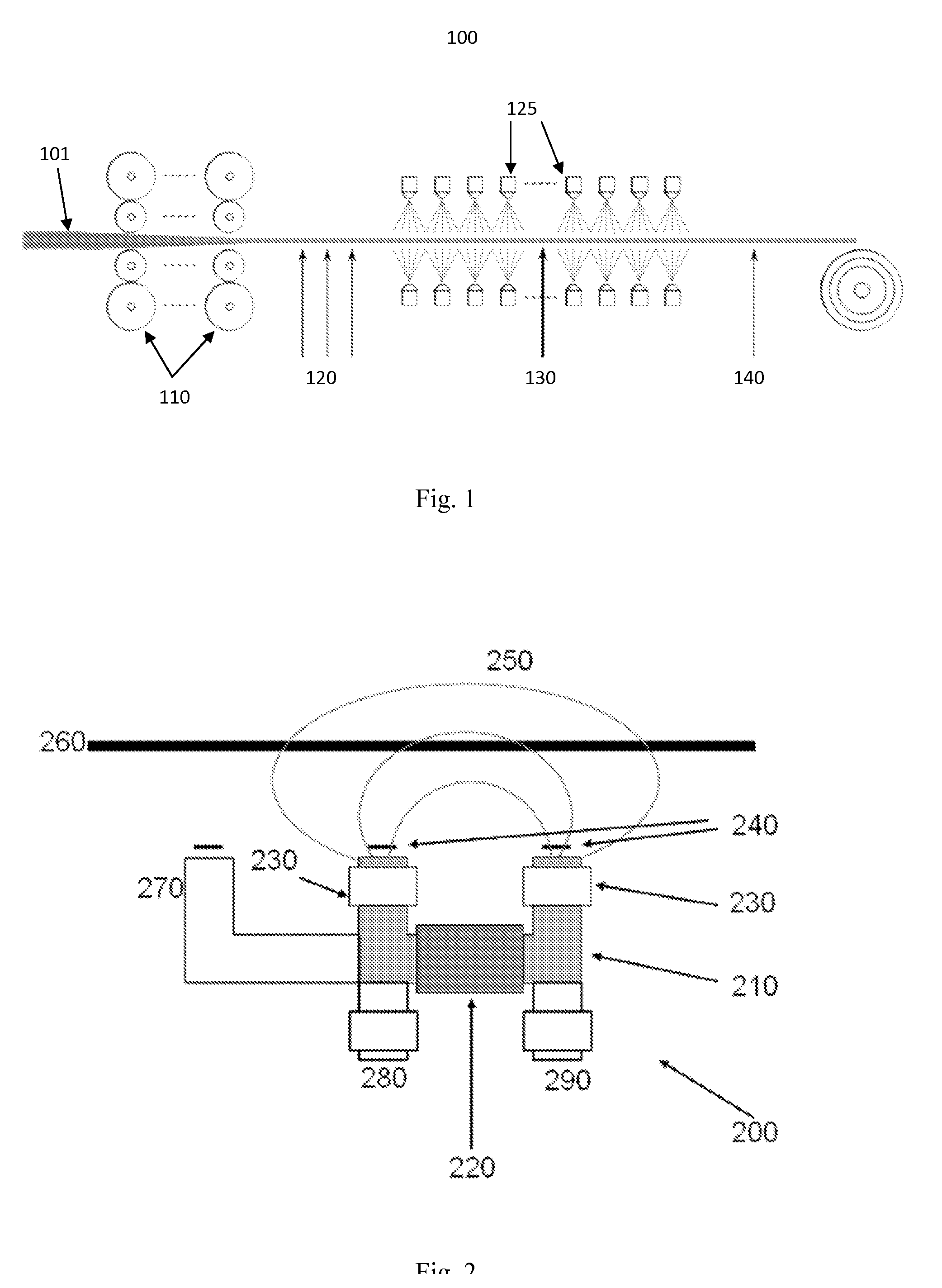Sensors
a technology of sensors and microstructures, applied in the field of sensors, can solve the problems of destructive microstructure analysis techniques, time-consuming, costly, etc., and achieve the effect of not allowing continuous monitoring, and reducing the number of sensors
- Summary
- Abstract
- Description
- Claims
- Application Information
AI Technical Summary
Benefits of technology
Problems solved by technology
Method used
Image
Examples
first embodiment
[0053]FIG. 4 illustrates an apparatus 400 according to the invention. The apparatus is an electromagnetic sensor unit 400 for sensing a microstructure of a metal target.
[0054]The sensor unit 400 comprises a magnetic core 410, one or more a magnetic excitation sources 420 and one or more magnetic detectors 430. The magnetic core 410 is configured to apply an interrogating magnetic field 440 generated by the excitation source(s) 420 to a metal target (not shown). The metal core 410 may be U-shaped, as shown in FIG. 4, or may be configured as a different shape, such as H-shaped. The excitation source 420 may be a permanent magnet, an electromagnet or a combination thereof. The magnetic detector 430 is arranged for detecting a magnetic field 440 and may include one or more induction detector coils and / or Hall probe sensors. Other magnetometers are also envisaged. In some embodiments, the sensor unit 400 comprises two magnetic detectors 430, each fitted to a corresponding pole of the mag...
second embodiment
[0060]Each of the calibration circuits 551, 552, 553, 554 may be individually controlled to generate a corresponding magnetic field. Each calibration coil may be configured to operate within a different respective calibration frequency range to calibrate the response of the sensor unit 500 at each frequency range. A first calibration coil 551 may be configured to operate within a first calibration frequency range, which is a relatively low frequency range. The configuration may include providing the first calibration coil 551 with one or relatively few turns. Similarly, the reference impedance associated with the first calibration coil 551 may be relatively low. A fourth calibration coil 554 may be configured to operate within a fourth frequency range, which is a relatively high calibration frequency range. The configuration may include providing the fourth calibration coil 554 with a relatively large number of turns. Second and third calibration coils 552, 553 may be configured to ...
PUM
| Property | Measurement | Unit |
|---|---|---|
| Curie temperature | aaaaa | aaaaa |
| tensile strengths | aaaaa | aaaaa |
| tensile strengths | aaaaa | aaaaa |
Abstract
Description
Claims
Application Information
 Login to View More
Login to View More - R&D
- Intellectual Property
- Life Sciences
- Materials
- Tech Scout
- Unparalleled Data Quality
- Higher Quality Content
- 60% Fewer Hallucinations
Browse by: Latest US Patents, China's latest patents, Technical Efficacy Thesaurus, Application Domain, Technology Topic, Popular Technical Reports.
© 2025 PatSnap. All rights reserved.Legal|Privacy policy|Modern Slavery Act Transparency Statement|Sitemap|About US| Contact US: help@patsnap.com



